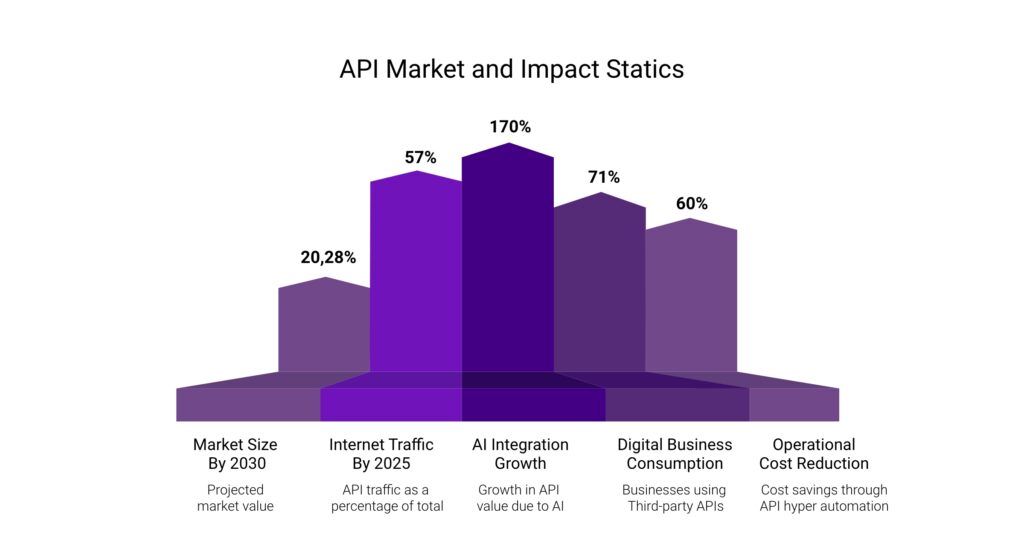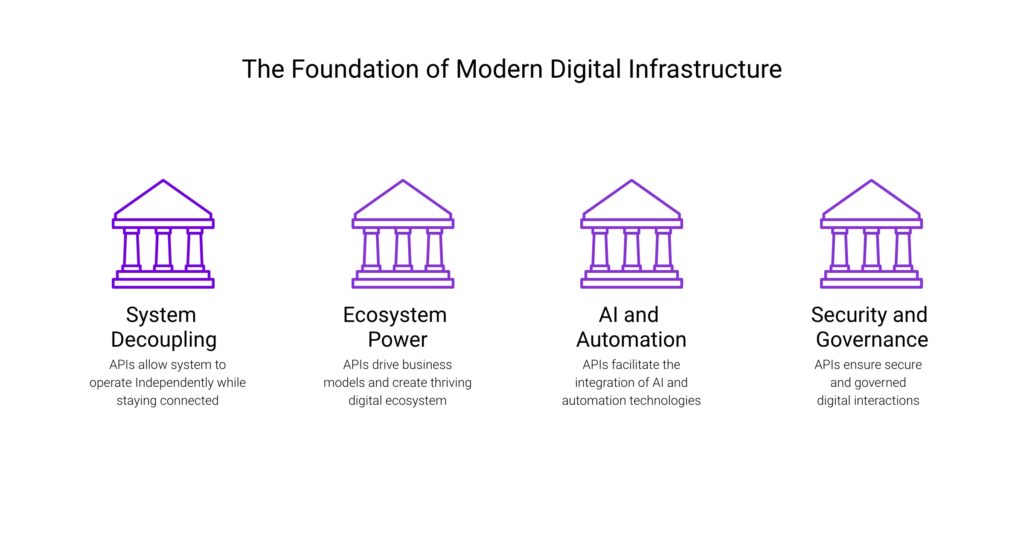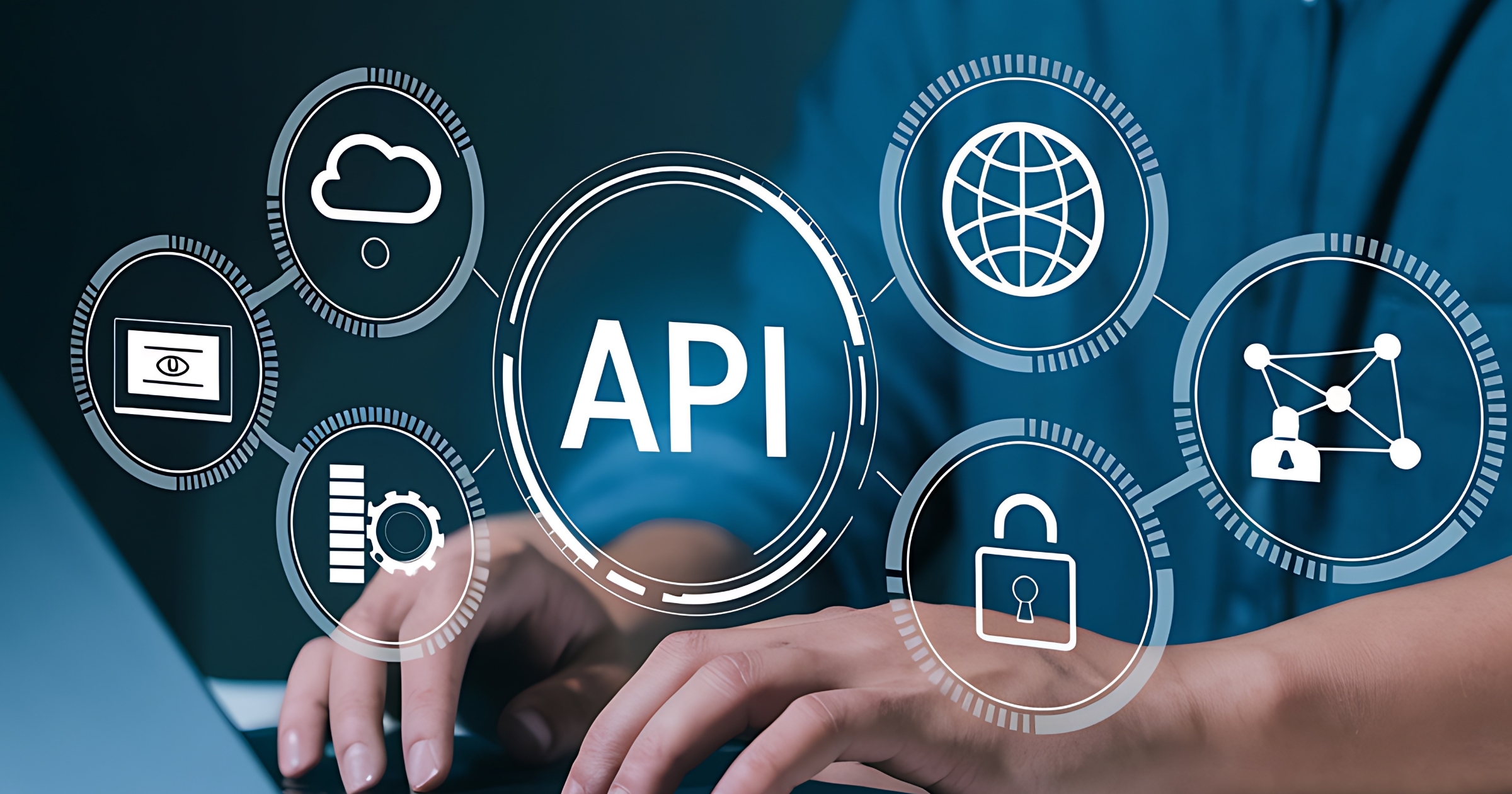An API (Application Programming Interface) is a structured interface that enables software systems to communicate with one another by exposing specific functionality or data. APIs abstract internal logic and offer standardized access points usually via HTTP, gRPC, or WebSockets, enabling interoperability across platforms and services.
Detailed Definition & Explanation
APIs (Application Programming Interfaces) are the contract layer between two software components, enabling controlled, standardized access to a system’s capabilities or data. Rather than exposing internal logic or implementation details, APIs act as interfaces that declare what a system can do, how it can be interacted with, and under what rules or constraints.
At their core, APIs:
- Serve as gateways to business logic, processes, or datasets, abstracting complexity behind well-defined endpoints
- Allow remote components to query, create, update, or delete data using standard communication protocols
- Enforce boundaries between components, promoting loose coupling, modularity, and independent evolution
APIs are central to modern software engineering, especially in distributed systems, cloud-native applications, and microservices architectures.

Types of APIs by Protocol & Style
Most modern APIs fall into one or more of the following categories:
REST (Representational State Transfer)
- Stateless, HTTP-based, resource-oriented
- Widely used for CRUD operations
- Returns structured formats like JSON or XML
- Ideal for web and mobile app backends
gRPC (Google Remote Procedure Call)
- Uses HTTP/2 and Protocol Buffers (Protobuf)
- Faster, more compact, and strongly typed
- Excellent for microservice-to-microservice communication where performance matters
GraphQL
- A query language for APIs
- Allows clients to specify exactly what data they need
- Reduces over-fetching and under-fetching
- Increasingly popular for frontend-heavy apps needing flexibility
Other styles used in internal enterprise systems include:
- Message-based APIs (e.g., Kafka, RabbitMQ) – for event-driven, asynchronous communication
- File-based APIs (e.g., SFTP uploads, XML drops) – used in legacy or batch-processing systems
- Socket APIs / WebSockets – for real-time, bidirectional communication (e.g., trading systems, chat apps)
APIs in Modern Architecture
APIs today go far beyond basic integration. They are the backbone of composable software and platform ecosystems:
- In microservices, APIs are the only way services interact, allowing for independent deployment, monitoring, and scaling
- In SaaS platforms, APIs are how customers customize, extend, or integrate products (e.g., Slack bots, Shopify extensions)
- In AI systems, APIs provide the I/O layer that models and agents use to access real-time context and execute functions
For example, in FD Ryze, each autonomous micro-agent communicates through APIs, triggering workflows, consuming documents, or pushing compliance reports. The flexibility of APIs allows Ryze to plug into client systems with minimal disruption.
Why It Matters

1. APIs Decouple Systems While Maintaining Cohesion
APIs make it possible to build loosely coupled systems where changes to one component don’t break others. This separation of concerns improves maintainability, upgradeability, and testability across large-scale distributed systems.
2. APIs Power Ecosystems and Business Models
From Stripe to Twilio to OpenAI, APIs are how companies monetize their core capabilities. Public APIs expose internal logic as commercial products. Private/internal APIs help teams collaborate without shared codebases.
For example, Amazon’s mandate that “all teams will communicate via APIs” was foundational to both its cloud-native transformation and the birth of AWS.
3. APIs Enable AI, Automation, & Platformization
Modern systems—especially those using AI, RPA, or agentic models like FD Ryze– rely on APIs to integrate, retrieve context, and trigger workflows. APIs provide the structured, real-time input/output layer that intelligent agents use to sense and act.
4. Security, Rate-Limiting, & Governance Are Built Around APIs
APIs are the attack surface. Without proper access control, throttling, and observability, they can expose sensitive systems to abuse or data leaks. Tools like API gateways, JWT tokens, OAuth 2.0, and API versioning are essential in production.
Real-World Examples
Stripe
Stripe’s API allows businesses to process payments, manage subscriptions, and handle fraud, all via a set of well-documented HTTP endpoints. It’s widely regarded as the benchmark for developer experience in API design.
FD Ryze
FD Ryze leverages APIs to communicate between its agentic AI microservices and client systems. For example, a “Document Change Tracker” agent connects to a legal document repository API to retrieve and analyze updates, while a compliance agent may push structured reports into enterprise GRC platforms via REST or SFTP APIs.
GitHub
GitHub’s REST and GraphQL APIs enable developers to automate repository management, CI/CD workflows, and security audits, making GitHub not just a platform, but a programmable ecosystem.
What Lies Ahead
1. API-first Development Will Become the Norm
More teams are designing APIs before building the backend. This enforces clean boundaries, speeds up parallel development, and enables external consumption from day one.
2. AI Will Consume and Generate APIs Autonomously
Agentic AI models (like those in FD Ryze) will dynamically consume APIs to gather data, trigger actions, or compose workflows. LLMs will also assist in generating APIs, validating schemas, and even writing docs via tools like Postman AI or Swagger Copilot.
3. From Endpoints to Capabilities
The evolution of APIs is moving toward intent-driven interfaces. Instead of static endpoints like /get-invoice, services will expose dynamic capabilities (“Give me billing data for customer X”) that are resolved through API composition engines.
4. API Governance Will Be a Board-Level Concern
With APIs now underpinning partner ecosystems, compliance (e.g., DPDP, GDPR), and even revenue models, their management, versioning, observability, and security posture will become enterprise-critical.
Related Terms
- REST API
- gRPC
- API Gateway
- OAuth 2.0
- OpenAPI / Swagger
- GraphQL
- Service Mesh
- API Throttling
- API Versioning
- Webhooks
